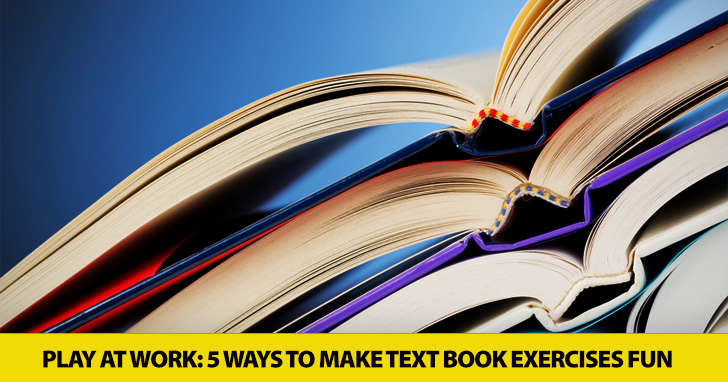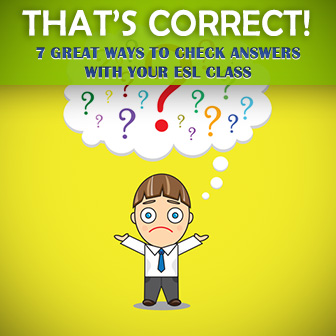Play at Work: 5 Ways to Make Text Book Exercises Fun


“Number 1 is A; number 2 is C; number 3 is B; number 4 is C; number 5 is A…” You’re probably already yawning and wondering where this is going. Reading out answers to exercises is probably the most effective way to bore your students and send them straight into a snore-induced stupor they won’t easily come out of. That’s right. It’s even more boring than memorizing past participles or repeating phonemes.
So here are some wonderful ways to check answers with your class – strategies that are guaranteed to not induce any yawning or snores of any type.

You can either hand out copies of the answer sheet or write the answers on the board before class. This way you can simply give them five minutes to check their answers and walk around the classroom to attend to any questions or doubts that may arise. This method works great with adults and autonomous learners who easily grasp their mistakes when confronted with the correct answer.
Divide students into pairs of groups of no more than three or four to compare their answers. This type of answer checking encourages speaking as students explain to others what their mistake is and why it’s wrong. This method works best with beginner to intermediate students, or for answers that are easy to explain. For example, a student may easily correct a peer on the correct past participle of “swim”.
This is a fun game that is perfect for checking answers and works best with long exercises of 20 or more questions. Make a grid on the board like so:
| 1 | 2 | 3 | 4 | 5 |
| 6 | 7 | 8 | 9 | 10 |
| 11 | 12 | 13 | 14 | 15 |
| 16 | 17 | 18 | 19 | 20 |
Divide your class into two teams. Team A starts by answering Question number 1. If they answer correctly circle the number 1 in red. Team B continues by answering Question number 5 and also gets a circle (of another color) for a correct answer. Team A now has the option to answer Question 2, 6, or 7. And so each team moves across the grid - the snake can move horizontally, vertically or diagonally – and the team with the longest snake wins!
This method works best with gap-filling exercises, for example if students have to fill in the blanks with words or verbs. Write all of the correct answers on the board in random order and as students check their answers, they must find them from the options provided.
Sometimes you’ll come across a question that was hard for most, if not all, of the students in your class. And this question in particular may take more explaining than the rest. So, why not tackle the hard ones first and get them out of the way? Before checking their answers, ask students to raise their hand if they had a hard time with a question in particular – find out if this was the case with other students in the class. Go through each of the questions they had trouble with and finally check the remaining answers to make sure they got those right as well!
The thing that probably bores students the most is the monotonous drone of the teacher’s voice as he/she gives one answer after another in strict order. Nothing shakes students up more than randomness. So, give the answers in random order. Call on students randomly. Then ask your students who wants to give the next answer. Then supply an answer yourself. That will keep them on their toes! By not letting them know what to expect, your students will be attentive and engaged.
This is something that can easily be done with higher levels or adults. When a student gives you their answer, don’t confirm right away if it’s right or wrong. Ask them, “Why did you write/how did you come up with that answer?” Students will be forced to go through the process that led them to reach their conclusion. Then, you can ask another student if they agree and if they reached the same conclusion. A terrific exercise!
Choose the one that you think will work best for your particular ESL class. Choose the method that will maximize their learning from mistakes.
Checking answers doesn’t have to be a tiresome chore that you have to get done as fast as possible. Instead of seeing it as an unavoidable task, look at it as another learning opportunity within your arsenal of fun activities to do with your ESL class.
How do YOU check your answers with your class? Sound off below!